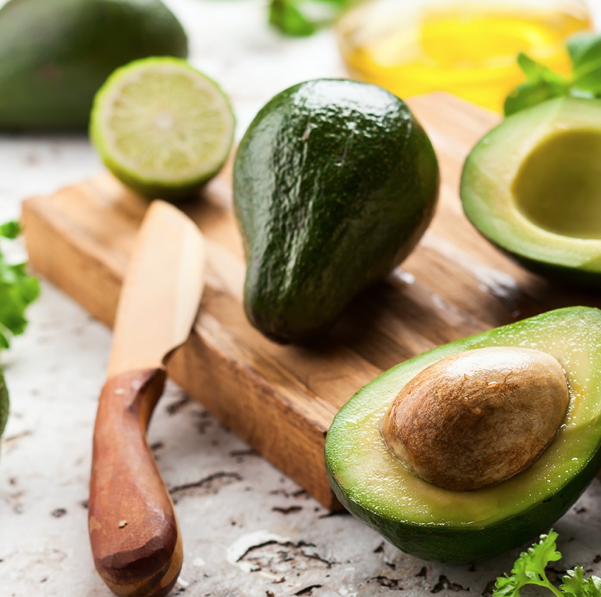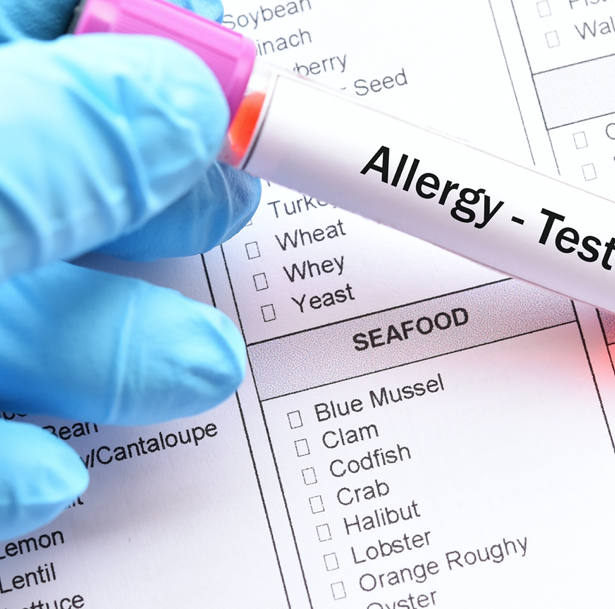- Fast results
- 4,000+ locations
- 4.8 star rating
Need Help? (888) GET LABS


This article is Medically Approved ✓ by Dr. Edward Salko
When it comes to food allergies, time is of the essence.
Early detection can save you from reckless choices and life-threatening conditions.
While knowledge about food allergies has become more extensive over the years, there are still lesser-known food allergies that seem to emerge from a small fraction of the population.
Here at Personalabs, we value food allergy awareness as a fundamental tool toward good health and long-term wellness.
Therefore, we spotlight rare food allergies by providing crucial details that everyone can benefit from.

A food allergy is characterized by an adverse immune response to a specific food or substance clinically referred to as allergens.
The allergic reaction can be due to food intolerance or an overreactive immune system.
In a normal circumstance, like when a harmful foreign substance gets in, the body releases immunoglobulin E (IgE) antibodies to attack the foreign invader.
During an allergic reaction, the same process occurs. The only difference is that the substances, primarily proteins, are generally nontoxic to the body.
Food allergies affect about 5% of adults and 8% of children.
Most of these cases are caused by common food allergens such as shellfish, soybeans, dairy, tree nuts, wheat, eggs, and fish.
However, other uncommon food allergies affect some people. These food allergies pose the same threats as that of their typical counterparts.
Since they are lesser-known, most people often assume they do not exist. Thereby, when they eat these foods, they generally do not consider them as probable cause for an allergic reaction.
With several food items on a single plate, it is sometimes tricky to pinpoint which one triggers allergy symptoms.
Nonetheless, knowing these food allergies are real is a crucial step to broaden your knowledge about the condition.

It is less likely that you find a person allergic to bananas within your circle. Less than 1% of the world population has this food allergy.
People who have banana allergies have heightened susceptibility to developing allergic reactions to other substances. This is because the proteins in bananas that trigger an immune response can also be found in other fruits and vegetables like papaya, chestnut, kiwis, and avocado.
Another item you should also avoid is latex, a material found in items like condoms and gloves. It has been observed that a banana allergy can trigger latex allergy and vice versa.

The trend of avocado toasts led to people discovering they’re allergic to the fruit itself.
Like a banana allergy, an existing latex allergy can also trigger allergic symptoms when a person eats avocado.
The proteins for both fruits and that of rubber latex have a similar structure.
The immune system perceives the said proteins as a threat to the body despite their harmless nature.
With this overactive immune response, you can kiss guacamoles goodbye.
Unfortunately, on top of guacamoles, your avocado allergy indicates that you should also avoid foods like potatoes, tomatoes, bananas, and chestnuts.
3. Citrus

Citrus allergy is more complex considering it covers a variety of fruit species. These include oranges, grapefruits, limes, and lemons.
The allergy can be triggered by ingesting the raw fruit, drinking citrus juice, or touching its peels.
Most cases of citrus allergy induce an oral allergy syndrome (OAS) wherein the reaction is localized in the mouth and throat.
Others experience contact dermatitis when the skin comes in close contact with the citrus.
Previously, it was understood that if you are allergic to one citrus fruit like an orange, you’re most likely to be allergic to all other kinds of citrus.
However, recent developments in allergy research showed that there are instances where tolerance to citrus fruits can be varied. This means you might have a strong allergic reaction to oranges but not in grapefruits.
Nonetheless, this may complicate the testing process without completely identifying the factor responsible for the uneven immune response.

There have been too many instances where coconut is mistakenly identified as a tree nut.
It is commonly presumed that it has something to do with its name containing the word nut.
Or perhaps it’s because the Food Allergen Labeling and Consumer Protection Act (FALCPA) identifies coconut as a tree nut. To be fair, the rationale behind this conscious error is to strengthen protection for people who unknowingly have a coconut allergy.
In reality, coconut is not a tree nut.
Coconut is a type of fruit widely found in tropical regions.
While it is uncommon to find coconut trees in most US states, products derived from coconuts are popular in the market.
There are cases, rare as they may be, that people consume coconut juice or flesh and develop an allergic reaction.

From corn flake cereals during breakfast to a buttery corn cob side dish for dinner, corn is a regular part of an American diet.
That is why it’s quite a challenge when you’re diagnosed with a corn allergy.
The exact cause of this type of food allergy is unknown. But the allergic reactions could become severe.
While it is tricky to detect corn allergy as the reactions are similar to other types of food and pollen allergies, once diagnosed, the fruits have to be eliminated from the diet immediately.
This means taking out raw corn, corn syrup, flour, and other derivative products from your grocery list.

Allergic reaction to mango is highly uncommon.
But most documented cases involved skin rashes (contact dermatitis) triggered by close skin contact with mango peels.
In some instances, the rashes do not appear after seven days of touching the peels. However, it was observed that the longer the contact with the mango, the faster the rashes develop.
Although the pulp rarely induces the allergic symptoms instead of the peel, severe occurrences of mango allergy led to complete avoidance of the fruit.

Food products like marshmallows and gummy candies contain gelatin, a type of protein from animal collagen.
There are incidents of gelatin allergies triggering OAS. Gelatin can also be found in some vaccines, like several flu shots.
The allergic reaction to these types of vaccines is often associated with the presence of gelatin.

Meats such as beef, pork, and lamb can trigger an allergic reaction with a delayed time.
Although more food allergies produce symptoms within minutes, red meat allergy may take three to eight hours after eating.
The culprit in this rare type of allergy is the sugar found in red meat known as alpha-galactose (alpha-gal).
Since alpha-gal is a carbohydrate, it takes longer for the body to process it. Thereby the allergic response is delayed as opposed to the usual protein allergen.
Red meat allergies are often associated with Lone Star tick bites.
People who have been repeatedly bitten by Lone Star ticks have higher risks for alpha-gal allergy, producing unwarranted IgE antibodies.
The most common way people find out about their food allergies is through the signs and symptoms suggestive of the condition.
However, not all types of food allergies automatically produce the same symptoms.
Some often induce OAS, while others trigger contact dermatitis.
Nevertheless, you can refer to the following conditions as an initial reference for confirmation of the allergy.
· Oral Allergy Syndrome (OAS)
o Itching or tingling inside the mouth or lips
o Scratchy throat
o Swollen lips
o Nasal congestion
o Sneezing
o Difficulty swallowing
· Skin redness and itchiness (hives)
· Swelling of the tongue and facial features
· Shortness of breath
· Dizziness
· Nausea and vomiting
· Abdominal pain
· Diarrhea
Anaphylaxis is a life-threatening severe allergic reaction.
It requires immediate medical attention as it could quickly worsen and lead to death.
If the allergy symptoms are not managed, it could result in the following conditions:
· Wheezing
· Confusion
· Tight chest
· Fast heartbeat
· Difficulty in breathing
· Loss of consciousness
· Trouble in swallowing or speaking
There are about 186 to 225 deaths due to anaphylaxis each year.
Recognizing any food allergy you have is a crucial step in protecting your health.
Before seeing an allergist, make sure to prepare relevant information such as the specific symptoms you experienced and family history of food allergies.
When diagnosing a food allergy, your doctor would typically order the following tests.
During this procedure, a portion of your skin is pricked, and a small amount of the presumed food allergen extract is dropped on the scratched area.
A positive result for the suspected food allergy is the formation of a bump or reaction on the affected skin.
There are certain cases wherein a skin test may not suffice to confirm a food allergy. Your doctor may order a food allergy blood test.
In this process, a blood sample is drawn and sent to a medical laboratory to analyze IgE levels.

When it comes to diagnosing a food allergy, recognizing the symptoms is crucial.
The existence of rare food allergies entails that we should always be aware of what we include in our meals.
If you have a family history of food allergies or if you have several accounts in which allergic reactions have occurred, it’s best to see a doctor as soon as possible.
You can undergo an Allergen Profile Blood Test to rule out common food allergens.
Additionally, your doctor may ask you to have an elimination diet and oral food challenge along with the skin test and blood test.

© Copyright 2025 Personalabs. All Rights Reserved.